|
|
Review of GSM-handset BenQ Siemens E61
Live photos of BenQ Siemens E61
Package:
- Handset
- Battery
- USB-cable
- CD with software
- Charger User Manual
Currently BenQ Siemens is trying to somehow improve situation when its products sales are going downhill. One of anti-crisis politics elements is maximally fast expansion of model line-up. One of areas in which company’s positions are weak is music. Success of Walkman series forced all manufacturers to create something similar. For BenQ Mobile lack of such solution wasn’t a problem, casual handsets with rather average specifications were turned into music solutions, and all such products were indexed with Q-fi. It somehow gets you into association with Hi-Fi abbreviator and is supposed to mean good sound quality. First handset in Q-fi family will be BenQ Siemens EF51, meanwhile BenQ Siemens E61, which is available today, was not classified as Q-fi, and there are enough reasons for that. One of the main ones is that such product would be okay for a line-up of manufacturer that does not have a name or has serious problems with not only platform for creating models, but also will to please the consumer. I will be completely honest with you on this one, this is the first handset ever to be released by a well-known manufacturer and is so weird. I was searching for a proper word that would describe this product, but there was no adequate way to describe it. Saying that this is a weak handset will actually be a flattery for it, I cannot say that it is nothing at all, it is beyond that. This product was weak during its development process by BenQ few years ago already, today it is completely and hopelessly outdated. I’d like to make a note that even device’s price does not come as a relief, it is 1.5 times higher than it should be, EF61 is overpriced. It is totally unknown what was manufacturer thinking about, it seems that this handset was made only for Asian market.

Let’s take a look at this development of BenQ, as Siemens’s engineers have no relation with this device. Model’s design is clearly targeted for young people, available case colors prove this point. We have milky white plastic with silver insertions, and second edition is black with orange insertions (don’t you get any associations with other music solutions?). Both colors have their right for existence, black is more practical as scratches are not that visible on it, and since plastic is rather tender this comes in handy. Design is typical for models that belong to middle class, quality of used materials is similar as well.

Phone’s dimensions – 101x44x17mm, weight – 96 grams. You can carry this handset however you like, there are no problems with it at all. One of unusual construction elements are music player control buttons that are located on top side. When keypad is locked you can press Play button for quite a while and player will launch. Buttons do not have any special points or relief peculiarities so that it would be easy to differ them when you don’t have the ability to see them.

Charger port is located on bottom side, it is different from standard interface of Siemens handsets. Jack for headset is located nearby, it is unique for this phone alone. You will not be able to use your own headphones, basically you are limited by one model only, and it is part of the standard package. This situation is not typical for music products from other manufacturers, and situation itself is similar to Sagem.
Video – connecting headset (wmv, 2.5 mb)>>>


There aren’t any control elements on phone’s sides. miniSD card slot is located inside the case, hot swap is not supported, but it is not required for products of such class.

This handset has TFT display that is capable of showing up to 65k colors, its resolution is 128x160 pixels (28x35 mm), which is typical for budget products, but not for middle class solutions, which has different standard – 176x220 pixels. Images are bright, but not that good in terms of quality, however it is still acceptable. When compared to Motorola E398 BenQ E61 has no chances to withstand a product that has been around for couple of years. Up to 6 text lines can fit the display and two additional lines will be used for service needs.

Keypad backlight color is bright white, it is clearly visible in different conditions. Keys are made of plastic and formed in terrace layout, comfort level is average. Navigation key steps up, this is why not everyone will find it comfortable to work with.



You can see VGA camera window on back side, as well as speaker’s hole that is used for loudspeaker mode and ring tone playback. Back cover does not have backlash, there is Li-Ion battery with 840 mA/h capacity beneath it. According to manufacturer it is capable of working up to 3 hours in talk mode and up to 215 hours in stand by mode. When we were testing this handset it worked for about 2 days with 45 minutes spent for phone calls and up to 4.5 hours spent during listening to music daily. It takes slightly less than 2 hours for battery to fully charge up.



Memory card is located inside the case, you have to remove the battery in order to access it, there fore no hot swap is possible.

Menu
Video clip showing the menu (wmv, 4.9mb)>>>
Interface is presented in a typical recent models from BenQ way, it is also similar to most modern models. In main menu we see a 3x3 matrix, all icons are fixed and cannot be moved. Sub-menus are presented as numbered vertical lists. Fast number navigation is supported. User can assign launch of separate functions to numeric keypad buttons, there is such setting in the menu and it is also typical to Siemens classical phones.
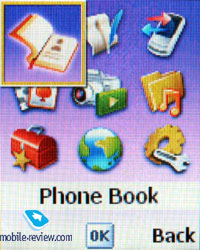
There are 1.9mb of memory in the handset and it is dynamically spread over all applications. Memory card is used for storing music, you cannot use it for any other applications.
Phone book. Press right soft-key and you will see contact list of your phone book, both handset’s memory and SIM-card entries will be shown at once. Handset offers you the ability o divide contacts into 7 groups (4 of them already have names), each group can have its custom ring tone and image. There can be up to 500 entries in phone book in total. For every entry four phone numbers of any type, office address, home address, company name, position, note and special date (such as birthday, however there is no synchronization with organizer) can be assigned, and don’t forget custom ring tone and image.
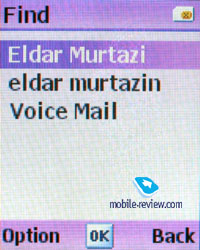 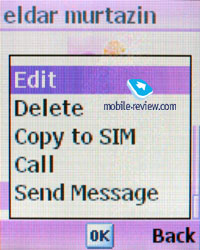
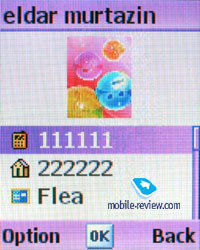 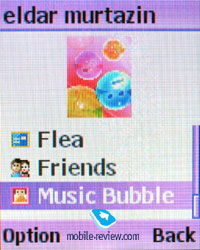
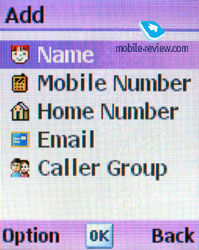 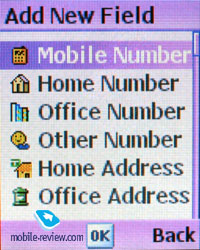
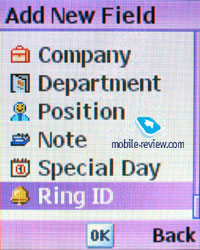
You can search contacts by first letter only. Search by several letters is possible only via menu. This is extremely inconvenient for those who have a lot of contacts stored. Handset supports black and white lists (you can add whole groups as well as separate contacts to those).
Messages. SMS are supported and that’s no wonder, same goes for T9. When selecting a language you cyclically move via all settings including T9 input for all languages, this is inconvenient. You can select only those languages that you actually need, why this hasn’t been done in the first place – remains a mystery. Messages can be stored in folders, there are templates, joined messages are supported as well (up to 9 of them).
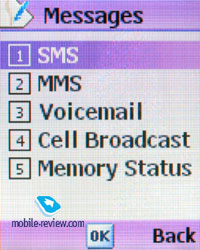 
 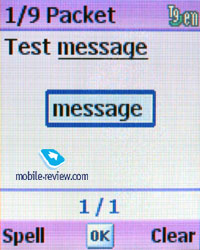
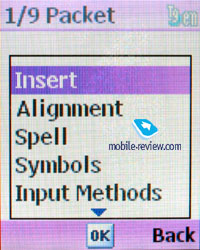 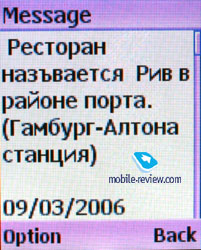
MMS realization is primitive, there is no editor, you have to fill separate fields and that’s it.
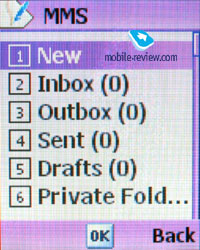 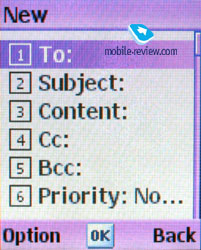
Call lists. There are three lists in total, each of them contains up to 20 entries. When you view separate entry, you see call time, date and phone number. Once you press call button – you will see overall calls list.
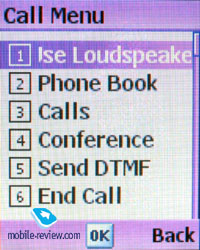 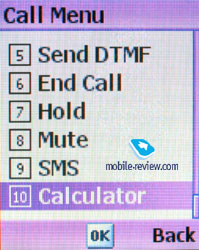
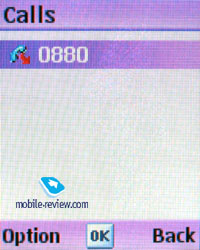 
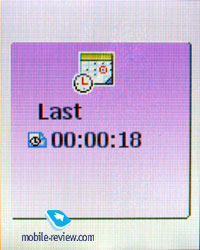
Games. There are two games installed – Twins and Kevin. Twins is targeted for improving keenness of observation, Kevin is a not so dynamic arcade. Manufacturer states that you can install additional java applications, but we were unable to do that, as browser was refusing to download any .jar format application. We were also unable to install any application via PC. Anyway, handset does not support MIDP 2.0 which makes it very much limited in terms of functionality.
 
 
Entertainment. This menu proposes two items at once – camera and MP3-player.
Camera. The E61 retains a VGA camera module, capable of snapping quite mediocre shots, although being a low-end one, it’s up to our modest expectations. Three resolutions are supported: 640õ480, 320õ240 and 128õ160 pixels. Even though there is a variety of available scenes (seven in sum, including “text”), you won’t feel much difference between them – quality still leaves much to be desired. The camera menu also plays host to 10 special effects, multi-shot mode (4 shots at a time) etc. But what this wide range of settings is really meant for is hiding poorness of the camera module, and to tell the truth it can’t be helped.
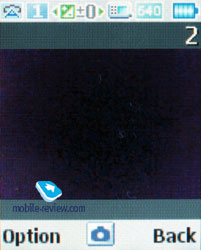 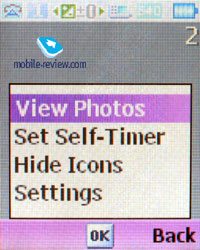
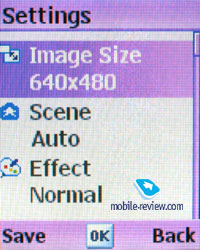 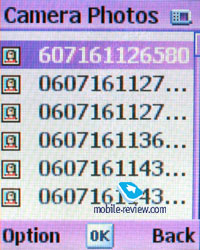
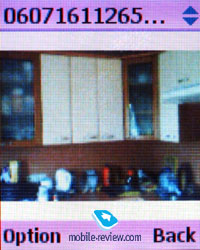 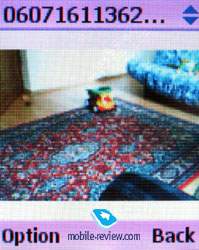
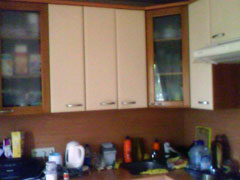 |
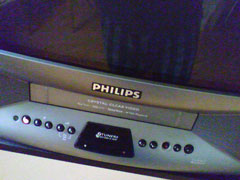 |
(+)
maximize, 640x480, JPEG |
(+)
maximize, 640x480, JPEG |
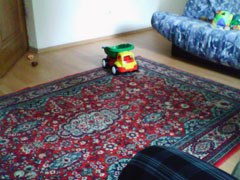 |
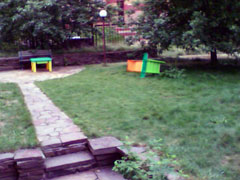 |
(+)
maximize, 640x480, JPEG |
(+)
maximize, 640x480, JPEG |
 |
 |
(+)
maximize, 640x480, JPEG |
(+)
maximize, 640x480, JPEG |
 |
 |
(+)
maximize, 640x480, JPEG |
(+)
maximize, 640x480, JPEG |
ÌÐ3-player. As the manufacturer claims, the E61 is a music-centric handset and therefore aims mostly at playing back music – for that it relies on a miniSD memory card, since the bundled memory is way too small to store something. The following formats are supported by the player: mp3, AAC, AAC+. BenQ also emphasizes that the memory card cannot exceed 1 Gb in size, however we manage to start up the handset with a 2 Gb card being plugged in. The explanation for that strange fact lies within the E61’s development period – indeed, back then 1 Gb capable memory cards were the biggest available.
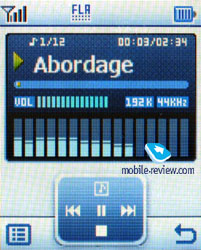 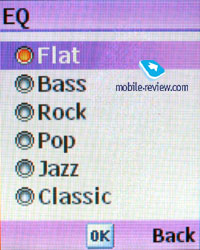
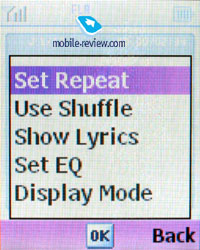 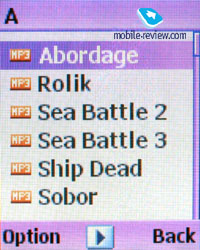
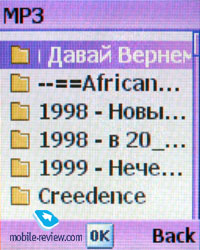 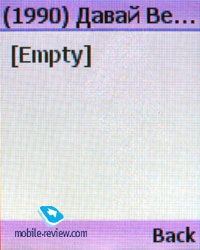
The player can be minimized, which is a major advantage, however as regards its obvious draws that is all, as in the rest of aspects you will have a hard time running this application. Firstly for some unknown reason the device can read only a limited number of folders on the memory card – it actually does display folders with music in the root directory, but when attempting to open a certain folder it shows nothing but blank space. Secondly, saving tracks into a special MP3 section, set by default, doesn’t solve that issue – some files will remain invisible.
Playlists on the E61 are quite tricky as well, since the handset won’t start playback unless you have made up a playlist. And it would do if tracks weren’t added one-by-one – in case your music library is quite lengthy, this takes loads of time.
The MP3-player retains a few standard capabilities as well: repeat, random playback, equalizer (Flat, Bass, Rock, Pop, Jazz, Classic), which does influence the outgoing sound, nonetheless its quality is not perfect; but it really works at least.
Show lyrics is an uncommon feature, enabling you to look through lyrics (in case there is any the file) while the track is being played back. You’re also at liberty to set 3D visualization, proposing only one pretty monotonous item. Rewinding on the go works without any issues.
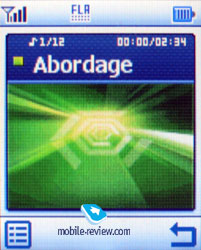 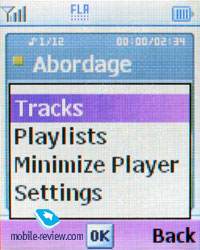
The sound quality in the default headset (you can’t plug in one of your own) turned out to be fairly good – the player puts out high volume (which is taken for indicator of high quality by many). Music lovers won’t be satisfied with its performance, while more unpretentious users are more likely to deal with it. While in loudspeaker mode the tunes sound pretty loud, yet they occasionally get distorted at full blast.
Media centre. Such high-flown title hides behind a standard gallery, housing pictures, tunes and other multimedia content. Memory status is accessible through this menu as well. A curious fact is that the localization is very bad not only for Russian language, but even for English – i.e. next under memory card’s icon and its “miniSD” label you will surprisingly find «Not existed», I personally haven’t managed to figure out what it stands for, as thinking of memory cards being disabled would mean opposing to the facts. To put it simply, similar level of localization is usually found on handsets by an average Asian manufacturer.
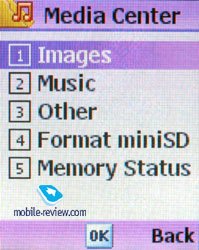
Tools. The handset offers 5 alarm clocks, capable of triggering off when the phone is turned off, each of them can be set to various weekdays and has alarm duration adjusted. The drawback here, however, is that if you don’t switch it off, it will keep on ringing as long as the battery has a bit of charge and that might get annoying sometimes.
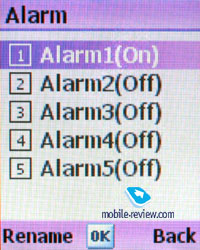 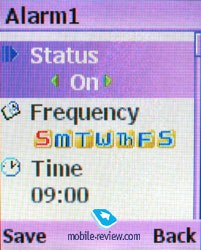
World clocks functions has no world map available.
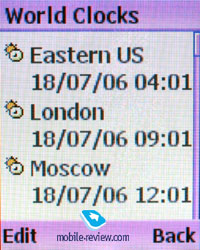
A basic calendar function with month-view being enabled allows submitting various events with extra fields on them. Taking account of any types of synchronization being unavailable, this calendar won’t be of much use.
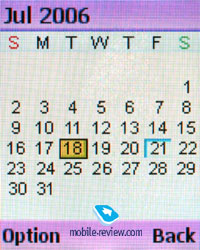 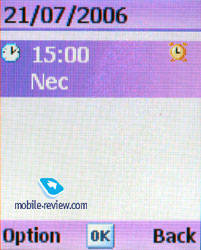
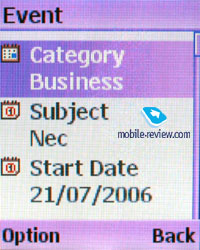 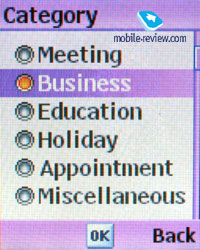
To Do list allows submitting and checking off completed events.

Notes – standard text memos.
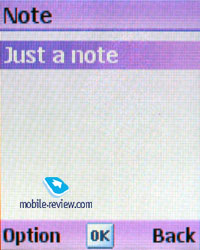
Shortcuts – assigned to numeric keys, these allow calling up a function by pressing and holding a corresponding key in standby mode.
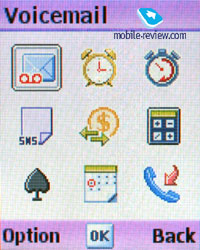
Calculator, unit converter, countdown, stopwatch.
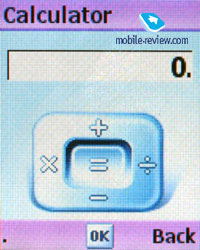 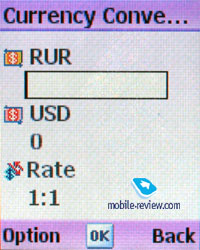
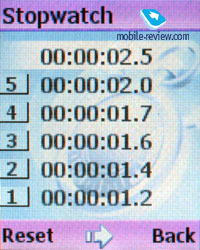 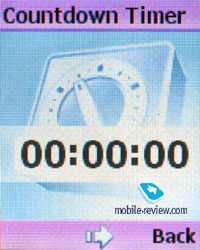
For connections carried out via USB you can set either modem or Mass Storage (USB ver. 1.1) mode.
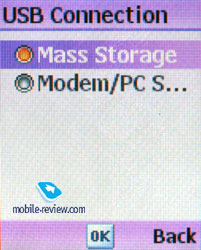
WAP-browser holds pre-installed access points for all Russian operators (Moscow, St. Petersburg), although the manufacturer hasn’t revealed the browser’s version (only WML support has been announced so far), in my opinion it is 2.0 without a support for xHTML. Here another shortcoming was waiting to get discovered – we couldn’t launch internet access point, the device kept on calling up prompts informing us about wrong settings. BenQ Mobile technical support wasn’t of much help either, as an aggravated woman was repeating the same thing over and over again for 20 minutes: the WAP browser is included, all settings are onboard, and nothing needs further adjustment. And when you humble servant hinted that the operators don’t have proper profiles for the E61 and in fact hadn’t tested it in their networks, I got the following reply: «Indeed, the operators cannot be aware of all models, since there are too many of them; however this very model is certified». Wrapping it all up I’ll that the hotline is aimed at calming down the most nervous clients and nothing else.
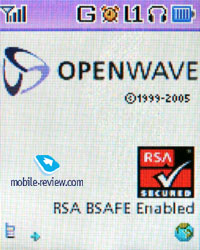 
Settings. Auto power on/off function is onboard along with profiles, themes, display settings, wallpaper, key assignment and flight mode.
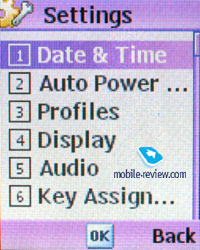 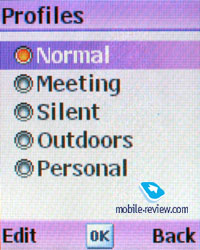
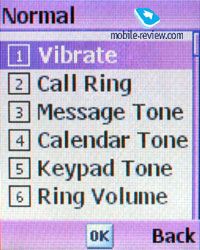 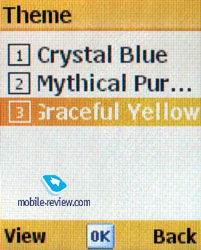
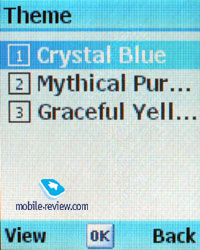 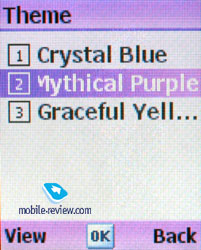
Impressions
The handset provides a bit worse connection quality than that of other Siemens-branded devices – there are extraneous noises, issues with network search. The ring tones produce fairly high volume, so that you won’t miss a call –the E61 apparently adopts 16-chord polyphony, regrettably the manufacturer has put a lot of efforts in concealing any detailed data on this phone.
The phone is available on the Russian market at the price of 195 USD which is too much for a handset of this kind - the manufacturer’s wholesale price is 136 USD. Considering that the package lacks a memory card, E61’s price increases by the expenses on purchasing one. As for this solution’s shortcomings – they are many:
- Missing Java, which makes this handset a stand-alone product;
- No wireless connectivity available and therefore no chance to trade music back and forth with friends;
- Mediocre display and polyphony;
- Malfunctioning MP3-player;
- Poor camera.
And the list is far from being complete. In a nutshell, the E61 is an entry-level model, which would make sense a year ago, but not today - it is definitely not a handset matching the requirements of a modern phone. The manufacturer clearly realizes it and that’s why has launched massive advertising campaign.
Take a look at the contest made up in cooperation with MTV Asia, it will surely be of some interest to you – http://www.mtvasia.com/Onair/Shows/Ampuh/e61contest/
And here an example of BenQ Siemens E61 commercial (5 Mb)
Even outdated solutions like Motorola E398 (costs around 190-200 USD) hold the upper hand when faced off against the E61 (display, Java, stereo-speakers, casing’s quality etc. etc.). Add a few coins and you will get a Sony Ericsson Z530i, sporting a much better media player, overall functionality and a pinch of image. In its turn BenQ E61 can offer nothing of all that. The model is obviously out of this age – all attempts to boost it somehow reveal BenQ Mobile’s hopelessness on the whole and the company’s attitude towards consumers.
SAR value for this mode – 0.67 V/kg.
Eldar Murtazin (eldar@mobile-review.com)
Translated by Oleg Kononosov (oleg.kononosov@mobile-review.com), Alexandr "Lexx" Zavoloka (alexander.zavoloka@mobile-review.com)
Published — 07 August 2006
Have something to add?! Write us... eldar@mobile-review.com
|
News:
[ 31-07 16:21 ]Sir Jony Ive: Apple Isn't In It For The Money
[ 31-07 13:34 ]Video: Nokia Designer Interviews
[ 31-07 13:10 ]RIM To Layoff 3,000 More Employees
[ 30-07 20:59 ]Video: iPhone 5 Housing Shown Off
[ 30-07 19:12 ]Android Fortunes Decline In U.S.
[ 25-07 16:18 ]Why Apple Is Suing Samsung?
[ 25-07 15:53 ]A Few Choice Quotes About Apple ... By Samsung
[ 23-07 20:25 ]Russian iOS Hacker Calls It A Day
[ 23-07 17:40 ]Video: It's Still Not Out, But Galaxy Note 10.1 Gets An Ad
[ 19-07 19:10 ]Another Loss For Nokia: $1 Billion Down In Q2
[ 19-07 17:22 ]British Judge Orders Apple To Run Ads Saying Samsung Did Not Copy Them
[ 19-07 16:57 ]iPhone 5 To Feature Nano-SIM Cards
[ 18-07 14:20 ]What The iPad Could Have Looked Like ...
[ 18-07 13:25 ]App Store Hack Is Still Going Strong Despite Apple's Best Efforts
[ 13-07 12:34 ]Infographic: The (Hypothetical) Sale Of RIM
[ 13-07 11:10 ]Video: iPhone Hacker Makes In-App Purchases Free
[ 12-07 19:50 ]iPhone 5 Images Leak Again
[ 12-07 17:51 ]Android Takes 50%+ Of U.S. And Europe
[ 11-07 16:02 ]Apple Involved In 60% Of Patent Suits
[ 11-07 13:14 ]Video: Kindle Fire Gets A Jelly Bean
Subscribe
|




















































































